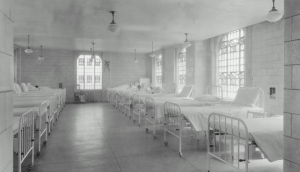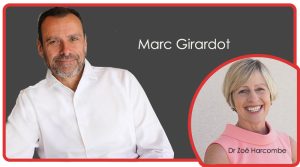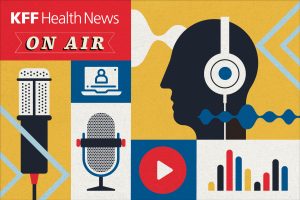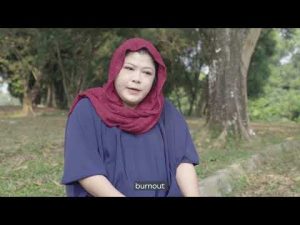Comfort and Joy in the Second Half of Life: Why Whole Brain Living is the Key to Success After 40

Part 2 —The Four Brain Characters and Two-Brain Wisdom
In Part 1, I introduced you to the truth our two brain hemispheres actually are like two different minds or personalities operating inside us and cause major problems if they don’t work together. Harvard trained neuroanatomist, Jill Bolte Taylor, learned first-hand about the way the two hemispheres of the brain work when she suffered a massive stroke in her left-hemisphere. Once she recovered, she wrote the book, My Stroke of Insight, that recounted her experiences and what she learned and a recent book, Whole Brain Living: The Anatomy of Choice and the Four Characters That Drive Our Life, which I have found very helpful in my own life following my wife’s recent stroke.
Getting to Know Your Four Brain Characters
“There is now convincing neuroanatomical evidence of the existence of four brain characters,”
says Dr. Taylor.
“Surgically separating our two brain hemispheres has scientifically shown us that they are not simply two anatomically separate halves of a whole. Instead, the two halves of our brain house completely different character profiles that each exhibit unique wants, dreams, interests, and desires.”
Dr. Taylor found that in each brain hemisphere there is a thinking character and an emotional character.
“Neuroanatomically these four groups of cells make up the left and right-thinkingcenters of our higher cerebral cortex, as well as our left and right emotional centers of our lower limbic system,”
says Dr. Taylor.
She goes on to add:
“The better you know your Four Characters, the easier your life will become.”
Since all information comes into the brain first through our emotional centers, Dr. Taylor says we are all “feeling beings who think, rather than thinking beings who feel.” The philosopher, René Descartes’ dictum cogito, ergo sum, (Latin: “I think, therefore I am”), whose views have greatly influenced our culture, demonstrates the imbalance towards our thinking centers which have come to overshadow our emotional centers.
Character 1. This rational character in your left-brain thinking is amazingly gifted at creating order in the external world. This part of your brain defines what is right/wrong and what is good/bad based upon its moral compass. It is also our left-brain Character 1 that triggers our stress response since it is a perfectionist in all it does.
Dr. Taylor suggests we name each of our brain characters as a way to begin to become intimate with these unique characters within us. She calls her Character 1, Helen.
“She is Hell on wheels and gets things done.”
I call my Character 1, Jaydij for Just Do It, Jed. This character is action oriented, takes no prisoners. He is impatient and jumps to creating solutions, often before he gets all the facts. Rather than taking his time–On your mark, get set, go–he often “goes off” quickly, never needing to get ready or set. This can, and often does, cause problems with relationships.
As you get to know your own Character 1, you will come up with your own name and learn his or her characteristics. Dr. Taylor lists some of the characteristics of Character 1 as follows:
- Organizes and categorizes everything.
- Divides people into we and they.
- Is protective of our people and suspicious of those people.
- Plans well.
- Respects authority.
- Critically judges right and wrong, good and bad.
- Interested in details and differences.
- Counts everything.
Character 2. The left-brain emotional character is preoccupied with one vital question: “Am I safe?” This is the core issue for any intimate relationship as well as our very survival through our long evolutionary history. Making a wrong decision was literally a life and death issue, particularly for women. Picking a partner who was not safe put women at risk of sudden death from predators, from males from other tribes who might cause harm to her or her children, as well as from a potentially untrustworthy partner. For men, the risk was also there, but the threat of death was less imminent.
Character 2 is often powered by a familiar feeling of unease that stems from either a traumatized or out-of-control past. As a result, this Character 2 part of our brain may end up feeling either “less than” or “not worthy.” It can also bring up fears of abandonment. That’s why I call the Character 2 part of my brain, Aban.
A great deal of the conflicts I have had in relationships can be traced back to my fears that my safety and security needs were being threatened.
Dr. Taylor says some of the most important characteristics of Character 2 include:
- Gets angry and name-calling when upset.
- Feels guilty.
- Internalizes shame.
- Loves conditionally.
- Negative self-judgment.
- Experiences a great deal of anxiety and worry.
- Egocentric.
- Blames others.
Where Characters 1 and 2, address issues of our past and future and how we can use things and people, our right brain Characters 3 and 4 are all about the present moment and we can connect with others and appreciate their uniqueness.
Character 3. The right-brain emotional, is our experiential self that seeks similarities rather than differences with other people. It wants to connect, explore, and go on adventures with others. The way the present moment feels is delicious, and sharing time, having fun, or deeply connecting through empathy can be gratifying for everyone.
I call my Character 3, Jeddy, the endearing name my wife, Carlin, calls me when we are feeling the most connected and playful. Jeddy is like a big joyful puppy dog. He is spontaneous, exuberant, unrestrained. He may unexpectedly jump into your lap and lick your face. He also can overwhelm you with his barks of delight and may even pee here and there when he is overly excited.
Dr. Taylor says some of the most important characteristics of Character 3 include:
- Forgiving.
- Awe-inspiring.
- Playful.
- Empathic.
- Creative.
- Joyful.
- Curious.
- Hopeful.
Character 4. The right-brain thinking character which exists as our most peaceful, open, and loving self. Our Character 4 is right here, right now, and completely invested in celebrating the gift of life with immense gratitude, acceptance, openness, and love. I call my Character 4, Lovers. My Tarot deck says the card VI, Lovers, is
“symbolized by the conjoined male and female, is the law of union—oneness through the marriage of opposites.”
Along with the right-brain feeling Character 3, Character 4 is what Dr. Taylor experienced in all its magnificence when the left-side of her brain was incapacitated due to the brain hemorrhage.
“This is the part of our consciousness, right thinking brain that we share with one another and all other life,”
says Dr. Taylor.
“I see the brain cells underlying our Character 4 as the portal through which the energy of the universe enters into and fuels every cell of our body. It is the all-knowing intelligence from which we came, and it is how we incarnate the consciousness of the universe.”
Dr. Taylor says some of the most important characteristics of Character 4 include:
- Aware: I am connected to all that is.
- Expansive: I am open to possibilities and value the big picture.
- Accepting: I am curious about what is and accept all of life’s experiences.
- Embraces change.
- Authentic.
- Generous of Spirit.
- Vulnerable.
- Connected: In the consciousness of the cosmic flow I embrace the timeless, all-knowing part of myself that is connected to all that is.
Life in the Second Half: Learning to Embrace Our Right-Brain Characters
Dr. Taylor points out that our whole world is out of balance and we are focused too heavily on Left-Brain thinking and feeling. When she had her stroke that totally compromised her Left-Brain thinking and feeling modes, she became instantly acquainted with the beauty and power of the Right-Brain characters.
I liken the experience to having the light of the sun shut off completely so we might live for a time in the beauty of the night sky with its billions of stars. It took Dr. Taylor years to regain her full function and her gift to us is a detailed and in-depth understanding of the four characters that make up who we are.
In many ways I have found that the power and beauty of old age can allow us to live more fully in the here and now, in our feeling and playful Character 3 and have our lives guided and enriched by the cosmic and expansive Character 4. In Whole Brain Living, Dr. Taylor has a chapter on what she calls, “The Brain Huddle: Your Power Tool for Peace.” I’ve used to brain huddle to allow my characters to talk with each other, particularly when I’m feeling frightening and insecure.
As we age, we must all face the reality of death, both our own, as well as our spouse and loved ones. I have found Dr. Taylor’s guidance, and the wisdom of my four brain characters working together, to be a source of great wisdom in creating true comfort and joy in my life.
I look forward to your feedback and comments. You can subscribe to my free newsletter and get my latest articles and information about living fully, loving deeply, and making a positive difference in the world. To learn more about our Moonshot for Mankind and Humanity join us here.







